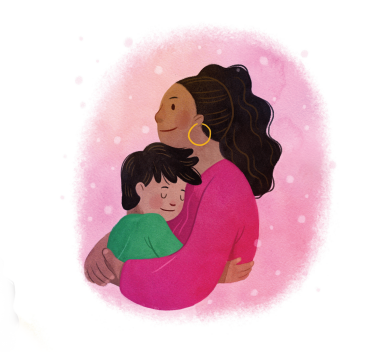All ECEC employees including casuals now have access to paid family violence leave

Full-time, part-time and casual employees in all sectors and industries, including early childhood education and care (ECEC), will soon be able to access 10 days of paid family and domestic violence leave in a 12-month period under a new ruling announced by the Fair Work Ombudsman.
The leave will not be pro-rated for part-time or casual employees, meaning the full entitlement is available upfront, regardless of the number of hours worked.
Defining family and domestic violence
Under the new provisions, family and domestic violence means violent, threatening or other abusive behaviour by an employee’s close relative, a current or former intimate partner, or a member of their household that both:
- seeks to coerce or control the employee
- causes them harm or fear.
A close relative is defined as:
- an employee’s
- spouse or former spouse
- de facto partner or former de facto partner
- child
- parent
- grandparent
- grandchild
- sibling
- a child, parent, grandparent, grandchild or sibling of an employee’s current or former spouse or de fact partner, or
- a person related to the employee according to Aboriginal or Torres Strait Islander kinship rules.
What can the leave be used for?
Employees (including part-time and casual employees) can take paid family and domestic violence leave if they need to do something to deal with the impact of family and domestic violence which is not practical for them to do during their work hours.
This could include, for example, the employee:
- making arrangements for their safety, or the safety of a close relative (including relocation)
- attending court hearings
- accessing police services
- attending counselling
- attending appointments with medical, financial or legal professionals.
When will the leave become available?
The leave will be available from:
- 1 February 2023, for employees of non-small business employers (employers with 15 or more employees on 1 February 2023)
- 1 August 2023, for employees of small business employers (employers with less than 15 employees on 1 February 2023).
The new leave provisions will be independently reviewed after 12 months to consider the impact of the leave on small businesses, sole traders and people experiencing family and domestic violence.
Until the leave comes into effect, employees will continue to be entitled to five days of unpaid family and domestic violence leave currently available under the National Employment Standards until they can access the new paid entitlement.
The leave will be renewed every year on each employee’s work anniversary, however it does not accumulate from year to year if it isn’t used. Employees who start on or after the date that the paid leave entitlement becomes available at their new workplace can access the full 10 days for their first day.
Payment for leave
Full-time and part-time employees can take paid family and domestic violence leave at their full pay rate for the hours they would have worked if they weren’t on leave.
Casual employees will be paid at their full pay rate for the hours they were rostered to work in the period they took leave.
An employee’s full pay rate is their base rate plus any:
- incentive-based payments and bonuses
- loadings
- monetary allowances
- overtime or penalty rates
- any other separately identifiable amounts.
Example – casual employee payment for leave
Demi is a casual educator who works in an ECEC long day care service.
Demi needs to take five days of leave from Monday to Friday one week to deal with the impact of family and domestic violence. During the five days Demi takes leave, she is rostered to work 25 ordinary hours.
Demi’s employer needs to pay Demi her base pay rate plus 25 per cent casual loading for the 25 hours Demi was rostered to work that week. Demi also needs to be paid any other loadings, allowances or other amounts that she would have been paid if she’d worked her rostered hours.
Demi’s balance of paid family and domestic violence leave is reduced by 5 days (until it renews on her annual work anniversary).
Example – payment for leave at full-pay rate
Riley is an early childhood teacher and his hours of work are 9am to 5pm, Monday to Friday.
Riley needs to take five days of leave one week to deal with the impact of family and domestic violence.
Riley needs to be paid his base pay rate for all hours he would have worked, plus any penalty rates that would have applied for those hours.
Riley also needs to be paid any other loadings, allowances or other amounts that he would have been paid if he’d worked instead of taking leave – for example, the Educational Leader allowance.
Riley’s balance of paid family and domestic violence leave is reduced by five days (until it renews on his work anniversary).
Can family and domestic violence leave be used during annual leave, or carers leave?
An employee can use paid family and domestic violence leave during a period of paid personal/carer’s or annual leave, Fair Work said.
If this happens, the employee is no longer on the other form of paid leave and is taking paid family and domestic violence leave instead. The employee needs to give their employer the required notice and evidence.
Do I need to provide evidence about what’s happening?
If an employee takes paid family and domestic violence leave, they have to let their employer know as soon as possible. This could be after the leave has started. An employer can ask their employee for evidence to show that the employee needs to do something to deal with family and domestic violence and it’s not practical to do that outside their hours of work.
An employer can only use this information to satisfy themselves that the employee is entitled to family and domestic violence leave, unless:
- the employee consents
- the employer is required to deal with the information by law, or
- it’s necessary to protect the life, health or safety of the employee or another person.
The employer can’t use the information for other purposes, including to take adverse action against the employee.
All other rules about notice and evidence are the same as the current rules for taking unpaid family and domestic violence leave.
Find out more about the current rules at Fair Work’s Notice and evidence for family and domestic violence leave webpage.
How can employers prepare for this change?
Fair Work is currently updating its website information, tools and resources and will have more information available closer to when these changes start.
To be notified when information is updated, subscribe to email updates.
In the meantime, employers can:
- Find out more about unpaid family and domestic violence leave and download the Employer guide to family and domestic violence
- Read The Hon Tony Burke MP’s media release at Universal paid leave for family and domestic violence.
Confidential information, counselling and support for people impacted by family and domestic violence is available at the 1800 RESPECT website, the national sexual assault, domestic and family violence counselling service.
Popular

Quality
Practice
Provider
Research
Workforce
Honouring the quiet magic of early childhood
2025-07-11 09:15:00
by Fiona Alston

Policy
Practice
Provider
Quality
Research
Workforce
Beyond the headlines: celebrating educators and the power of positive relationships in early learning
2025-07-07 10:00:24
by Fiona Alston

Workforce
Policy
Quality
Practice
Provider
Research
ECEC must change now, our children can’t wait for another inquiry
2025-07-02 07:47:14
by Fiona Alston













